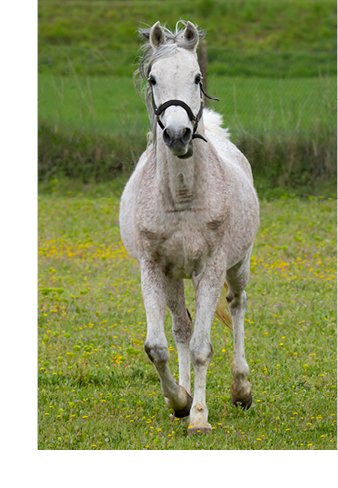Moving Past White Horse Realities To Solutions While Enjoying Beautiful White Sands And Aquamarine Waters
Greetings *|FNAME|*,
 Many years ago, my husband Paul introduced me to the White Horse parable. The story really speaks to an old youthful habit that I have grown out of during past 34 years, of quickly declaring things good or bad in the moment they happen. If you are aren't familiar with the story, it describes how what may seem to be good in the beginning, can turn out to be not-so-great in the end, and vice versa. The parable demonstrates the concept that there really never is an end, and at different points in time, the same circumstance can be viewed as both good and bad. By respecting moments as transitory and understanding that we don't see all (or even very much) of the whole story, then we are empowered to not attach or dwell on present set-backs. Enjoy it, yes. Or tolerate it, yes. But fight it? No. By knowing that life brings us many twists and turns, delivering all sorts of results in an ongoing manner, we can reduce the urgency or concern about any one event.
Many years ago, my husband Paul introduced me to the White Horse parable. The story really speaks to an old youthful habit that I have grown out of during past 34 years, of quickly declaring things good or bad in the moment they happen. If you are aren't familiar with the story, it describes how what may seem to be good in the beginning, can turn out to be not-so-great in the end, and vice versa. The parable demonstrates the concept that there really never is an end, and at different points in time, the same circumstance can be viewed as both good and bad. By respecting moments as transitory and understanding that we don't see all (or even very much) of the whole story, then we are empowered to not attach or dwell on present set-backs. Enjoy it, yes. Or tolerate it, yes. But fight it? No. By knowing that life brings us many twists and turns, delivering all sorts of results in an ongoing manner, we can reduce the urgency or concern about any one event.
Paul and I lived our own White Horse parable in real life this past month. It was awful going through radiation, chemotherapy, surgery and post-op treatments over the past year, but one result was that we earned a bucket full of Marriott points. They helped pay for a 6-day beach vacation in Sarasota to celebrate the end of my Cancer treatments, my recent birthday, and our 22nd wedding anniversary. We stayed at the Westin for next to nothing, AND breakfasts were free because of our membership status!
 During one of the days at beautiful Siesta Beach, Paul and I decided to head out into the water and cool off. As I was handing Paul my glasses so I that could fully dunk into the ocean, a wave hit him hard. The waves and undertow were rather fierce that day, so not only did he fall, but he also accidentally dropped the glasses in the turbulent waters. I am blind as a bat without glasses, so the initial emotional response was "O Sh**!" After searching briefly, it was clear they were gone forever. So we fairly quickly moved on into figuring out what the next step should be. The next day was Memorial Day, but we were fortunate to find a Lenscrafters open for business. Within a few hours, I had new frames with transition lenses that are, in my view, more stylish and infinitely more comfortable. While we were paying, Paul reminded me about how I had even hated the other eyeglasses, which were now gone for good. We had both pivoted and moved on quickly to something better, and as a result, resumed our fabulous time together in paradise instead of dwelling in fear or frustration.
During one of the days at beautiful Siesta Beach, Paul and I decided to head out into the water and cool off. As I was handing Paul my glasses so I that could fully dunk into the ocean, a wave hit him hard. The waves and undertow were rather fierce that day, so not only did he fall, but he also accidentally dropped the glasses in the turbulent waters. I am blind as a bat without glasses, so the initial emotional response was "O Sh**!" After searching briefly, it was clear they were gone forever. So we fairly quickly moved on into figuring out what the next step should be. The next day was Memorial Day, but we were fortunate to find a Lenscrafters open for business. Within a few hours, I had new frames with transition lenses that are, in my view, more stylish and infinitely more comfortable. While we were paying, Paul reminded me about how I had even hated the other eyeglasses, which were now gone for good. We had both pivoted and moved on quickly to something better, and as a result, resumed our fabulous time together in paradise instead of dwelling in fear or frustration.
The White Horse parable is also applicable to business. When leadership and teams apply the same kinds of emotional and practical agility that allow them to move quickly past episodic success or failure, they are poised to achieve the highest performance possible. Let me share one example of how this can play out.
 Awhile back, I worked with two nonprofit organizations who held a long-lasting connection, each performing a specific function that created a symbiotic relationship for their learning & development products. Each company drew revenue through the other's training or certification activities, and neither was legally capable of replicating the other's contribution to the process. So for a long time they complemented each other well. But one day, a key person was fired from one of the companies, and then hired by the other one. There was not a non-compete in place. As the result, this move generated an immense amount of friction between the two companies, creating some systemic adversity. Through legal consultation, the Executive Director of the first organization decided to sever ties, continuing to deliver their product but with specific improvements that made their exams legally defensible. They added training design and delivery to our contract, and the new training was built on best practice. They didn't dwell on the loss of this key person. They pivoted to the next step.
Awhile back, I worked with two nonprofit organizations who held a long-lasting connection, each performing a specific function that created a symbiotic relationship for their learning & development products. Each company drew revenue through the other's training or certification activities, and neither was legally capable of replicating the other's contribution to the process. So for a long time they complemented each other well. But one day, a key person was fired from one of the companies, and then hired by the other one. There was not a non-compete in place. As the result, this move generated an immense amount of friction between the two companies, creating some systemic adversity. Through legal consultation, the Executive Director of the first organization decided to sever ties, continuing to deliver their product but with specific improvements that made their exams legally defensible. They added training design and delivery to our contract, and the new training was built on best practice. They didn't dwell on the loss of this key person. They pivoted to the next step.
Change by Design assessed the facts of the transition and helped shepherd the organization through significant struggles to achieve the end result. Meanwhile, the second organization went through a rebranding exercise. They harnessed the knowledge of their new hire. They tried to reposition and vertically integrate. But nothing they tried worked, and now they have faded away. Meanwhile, the customers of the remaining organization have been gushing about the improved quality. Simultaneously, customer-facing associates have leveled-up from moderators to actual trainers. They aren't just reading a script or directly from the manual – they are helping the learners actually learn.
It took vision and tenacity for the remaining organization's leadership and staff to deal with the many financial and other implications of this initiative. This was a sea change for the 15,000-member organization. There were many twists and turns along the way… where things looked bleak for quite awhile. But the team stayed the course, and now are on the road to smooth sailing. And while it all looks good now, it is not the end of the story. Testing out courses and demonstrating exam viability takes time.
Remember, often only at the close of a very long story arc do we know what the story's ending *might* be. And even that is shortsighted. Because often, the end of the arc may not even be visible until our own lives are over, or even many years beyond that point. Therefore, I encourage you to enjoy the good things as they arise, and avoid freezing like a deer in the headlights in the face of sudden threats. Enjoy a white sand beach. Appreciate how a moment will pass, good or bad. Retain your valuable time, and don't waste your energy with paralysis, focusing on a problem.
Instead, focus on the solution.
Yours truly,


Sue
Email | LinkedIn | V-Card